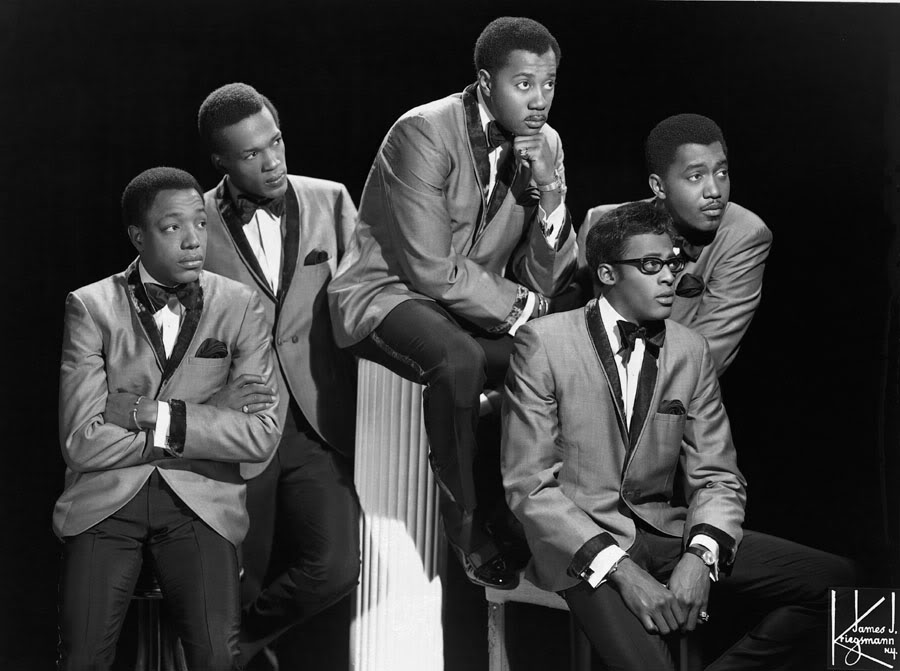Top 100 Hits of 1960/Top 100 Songs of 1960 Billboard Year-End Hot 100 chart for 1960. For detailed information on how Billboard compiled the charts, see the Wikipedia article ' Billboard Hot 100 '.
It was the decade of Dylan and Aretha, the Beach Boys and the Beatles, Hendrix and Zeppelin. But that’s not all it was. The 1960s also included the slyly political pop of Brazil’s Os Mutantes, the early electronic experiments of Silver Apples, and the free jazz exhalations of Albert Ayler. It was a single-oriented era—a startlingly inventive period following the initial explosion of rock’n’roll but before the album became dominant—when entire new genres seemed to bubble up every few months. The ’60s marked a time when pop music became more than a teenage fad, turning into an important art form in its own right as it soundtracked the civil rights movement, the hippie heyday, and the Vietnam War.
In an effort to highlight less iconic artists and properly showcase the variety of sounds the ’60s had to offer, this list features no more than five entries by any given artist. These are the 200 songs that most resonate with a generation too young to have experienced the decade firsthand, but old enough to know it had more to offer than “(I Can’t Get No) Satisfaction.”
- Marble Arch Records, 1966
- The Kinks
“Sunny Afternoon”
While already rightly revered as bratty garage rockers by the time of this track’s release, the Kinks truly excelled when singer Ray Davies took a more observational, wry approach to songwriting—and “Sunny Afternoon” is one of his wriest on record. As the song’s ground-down, sadsack narrator, Davies sounds utterly exhausted by the task of telling his miserable tale, backed by a descending chromatic bassline that nearly flatlines by song’s end. –Adam Moerder
Listen: The Kinks: “Sunny Afternoon”
- Colpix Records, 1964
- Nina Simone
“Black Is the Color of My True Love’s Hair”
The famous Celtic ballad begins with a lustful list of physical attributes—a true love’s hair, face, eyes, and hands—but Nina Simone’s voice is less than interested in the material world. She emits a spectral trill, as confident and crestfallen as a death-row inmate. Even the skeletal piano feels too heavy for Simone’s vaporous devotion. –Alex Linhardt
Listen: Nina Simone: “Black Is the Color of My True Love’s Hair”
- Scepter Records, 1964
- Dionne Warwick
“Walk on By”

People talk about “perfect pop” and I generally have no idea what they’re talking about. “Walk on By” is perfect pop, though, in the strictest sense: not a hair is out of place, no smudged eyeliner, nothing to taint its inherent loveliness. Any Bacharach/Warwick collaboration is a pick hit to click, but this is the most famous for a reason. Poised to the brink of formality, the song moves with the utterly unhurried grace of a woman in a ball gown. Perfect composure is one way to keep the tears inside, after all. –Jess Harvell

Listen: Dionne Warwick: “Walk On By”
- Impulse!, 1963
- Charles Mingus
“Solo Dancer”
The Black Saint and the Sinner Lady is regularly cited as a masterpiece of jazz orchestration, but that hardly accounts for the sheer fury of Mingus’ creativity. “Solo Dancer” is like a jazz diagram of the psyche or a chronology of the 20th century: a swarming assembly of neon alto, cracked trumpets, chromatic discord, and prolonged lyricism. –Alex Linhardt
Listen: Charles Mingus: “Solo Dancer”
- Imperial, 1964
- Irma Thomas
“Time Is on My Side”
Though Thomas is widely acknowledged as the Soul Queen of Nola, I’ve always thought she never got a fair shake (e.g. neither “Ruler of My Heart” nor “Don’t Mess With My Man” made this list). The Rolling Stones eventually made this song a smash, but all they did was jack Thomas’ steez in full, changing nary a note, save one small thing: They could never belt like her. –Sean Fennessey
Listen: Irma Thomas: “Time Is on My Side”
- King Records, 1963
- James Brown
“Night Train (Live at the Apollo)”
Sure, the official version (released in 1962) moves and grooves just fine, especially with Brown doing double duty on the mic and on the drums. But compared to what’s on Live at the Apollo, it’s doing the standing still. On the greatest stage in the world, Mr. Star Time goes up and down the eastern seaboard in record time, shouting out the stops the train ain’t stopping at, while the band throws more and more coal into the engine. –David Raposa
Listen: James Brown: “Night Train (Live at the Apollo)”
- UNI Records, 1968
- The Foundations
“Build Me Up Buttercup”
This is the stuff mixtapes are made of: an infectiously catchy melody that sugarcoats a protagonist’s romantic plight, and lyrics that instantaneously connect with red-blooded love birds. The Foundations’ career may have burned short and hot, but their pop chops and puppy-dog pathos remain timeless. –Adam Moerder
Listen: The Foundations: “Build Me Up Buttercup”
- Columbia, 1967
- Johnny and June Carter Cash
“Jackson”
About a haranguing wife that, in the fourth verse, transforms into a creature far more badass than her “big talkin’” husband, “Jackson” puts to song the time-honored tradition of doing crazy things to fix a crazy relationship. The story is almost as romantic as that of the two lovers who sing it. –Zach Baron
Listen: Johnny and June Carter Cash: “Jackson”
- Studio One, 1967
- Alton Ellis
“I’m Still in Love With You”
With Alton Ellis crying eternal affection above a gentle, stuttering riddim, this is the perfect starry-eyed Jamaican wedding song, right? Not quite. 'You don’t know how to love me, not even how to kiss me—I just don’t know why…' he sneaks in, slyly mixing tragedy in with the love-drunk refrain. Unrequited love has rarely seemed so tantalizing. –Ryan Dombal
Listen: Alton Ellis: “I’m Still in Love With You”
- Capitol Records, 1966
- The Cannonball Adderley Quintet
“Mercy, Mercy, Mercy”
It wasn’t really recorded at “The Club”—that was just a trick to get some publicity for a new venue on Chicago’s South Side. Instead, Adderley got some friends together in the studio and plied them with drinks while the band cut this bit of surging, euphoric gospel. Every whoop, though, is true and from the heart. –Mark Richardson
Listen: The Cannonball Adderley Quintet: “Mercy, Mercy, Mercy”
- Columbia, 1968
- Leonard Cohen
“So Long, Marianne”
“So Long, Marianne”’s acoustic strum and weepy concertina crank up once Cohen weighs his conflicting desires for shelter and freedom, establishing a recursive loop of lamentation and joy. Love is a filament of web binding him to a ledge—stronger than its fragile appearance would imply; it’s easier stretched than severed. –Brian Howe
Listen: Leonard Cohen: “So Long, Marianne”
- Etiquette Records, 1965
- The Sonics
“Strychnine”
A song about drinking rat poison and liking it more than either water or wine. Garage-rock proto-punks the Sonics—without their raw fuzzed-buzz and Gerry Roslie’s roll’n’roll howl—played rock that couldn’t help but shock and awe. –Zach Baron
Listen: The Sonics: “Strychnine”
- A&M Records, 1968
- Tyrannosaurus Rex
“Debora”
Listen To Songs From The 60's
Pre-glam, pre–T. Rex Marc Bolan recorded this hand-drummed Lord of the Rings Brit folk spasmodica. Among other things, it’s another great example of Bolan’s unmistakable influence on Devendra Banhart and the Hairy Fairy crew. The jumpy verbal string of “Dug a re dug n dug a re dug re dug” and lines like “O Debora, always dress like a conjurer/It’s fine to see your young face hiding/’Neath the stallion that I’m riding” confirm why Bolan named his book of poetry a very Danzig-sounding The Warlock of Love. But really, he’s Donovan with chops. –Brandon Stosuy
Listen: Tyrannosaurus Rex: “Debora”
Songs From The 60's Lyrics
- Smash Records, 1966
- The Walker Brothers
“The Sun Ain’t Gonna Shine Anymore”
Before Scott Walker was a shivery avant-gardist, he was a shivery crooner pinup, and this spaghetti Western anthem was his band’s biggest hit. Like the Righteous Brothers by way of the Free Design and Ennio Morricone, this was light years away from his current coordinates, but no less cinematic. –Mark Pytlik
Listen: The Walker Brothers: “The Sun Ain’t Gonna Shine Anymore”
- Imperial, 1966
- The Hollies
“Bus Stop”
Never mind that “Bus Stop” evokes a gentler counterculture in which the youth of the nation enacted mating rituals—attraction, pairing, commitment—underneath a pedestrian umbrella. From the first sprinkles of acoustic guitar to the stormcloud minor chords, from the desperate harmonies of the chorus to the sweet idea of falling in love out of the rain, this Hollies hit is all hook. –Stephen M. Deusner
Top 100 Songs From The 60's Download Torrent Youtube
Listen: The Hollies: “Bus Stop”
- Gordy, 1966
- The Temptations
“Get Ready”
On the verses, “Get Ready” is a tense and unforgiving stomper, but the chorus turns the song into a sweeping drama, a transcendent whoop of joy—and throughout it all, Eddie Kendricks’ angelic falsetto floats overhead like a balloon caught in a gust of wind. –Tom Breihan
Listen: The Temptations: “Get Ready”
This was then followed by the serial number beginning with 1000. Example: 69C1000 = A 1969 Hi Power pistol with a serial number of 1000. In 1975 Browning standardized its serial number identification which it followed until 1998. This would be a 9mm Hi Power pistol, manufactured in 1976 with the serial number 01001. May 14, 2008 - 1994 1976-1997. In 1975 Browning standardized its serial number identification which it followed until 1998. Hi-Power Type: 245=9mm 2. Now you can date your Browning firearm. The serial number found on your gun has the answer. This area will help you read that. B-78 High Power Rifle. Browning hi power serial date.
- King Records, 1969
- James Brown
“Mother Popcorn (You Got to Have a Mother for Me)”
No words can describe this song’s throbbing physicality better than the singer’s own “Jump back baby, James Brown’s gonna do his thing.” That “thing” involves a hysterical performance that switches from a sexualized grunt to a bizarre, high-pitched whine without warning. And with a horn chart snaking around a squirmy guitar line, Brown’s band does its thing, too. –Stephen M. Deusner
Listen: James Brown: “Mother Popcorn (You Got to Have a Mother for Me)”
- ATO Records, 1960
- Bobby Darin
“Beyond the Sea”
The aural definition of “wistful,” the lyrics to “Beyond the Sea” scan as if there should be doubt that the song’s distant lovers will meet again. In his reading of the song, Darin doesn’t sound so sure; even when his band gets raucous, he sits it out and comes back as melancholy as ever. –Joe Tangari
Listen: Bobby Darin: “Beyond the Sea”
- Decca, 1962
- Patsy Cline
“She’s Got You”
Money can’t buy love, but roving hands can steal it, and on this countrypolitan waltz, Cline sounds irrevocably bereaved, running through possessions she has, and the precious one that no longer belongs to her. I think there’s a piano in my beer. –Marc Hogan
Listen: Patsy Cline: “She’s Got You”
- Phillips, 1964
- France Gall
“Laisse Tomber les Filles”
Twista do or die mp3 download. In 1964, Gall was a 17-year-old ingénue, but her mentor—a promising 36-year-old lecher named Serge Gainsbourg—turned garish jailbait euphemisms into an art form. Accompanied by swooning trumpets and speakeasy bass, Gall makes her way through a tawdry jukebox-slapping cabaret populated by alcoholics and nymphettes. If pop music is supposed to combine virginity and carnality, “Laisse Tomber les Filles” might well be the pinnacle of yé-yé ecstasy. –Alex Linhardt
Listen: France Gall: “Laisse Tomber les Filles”